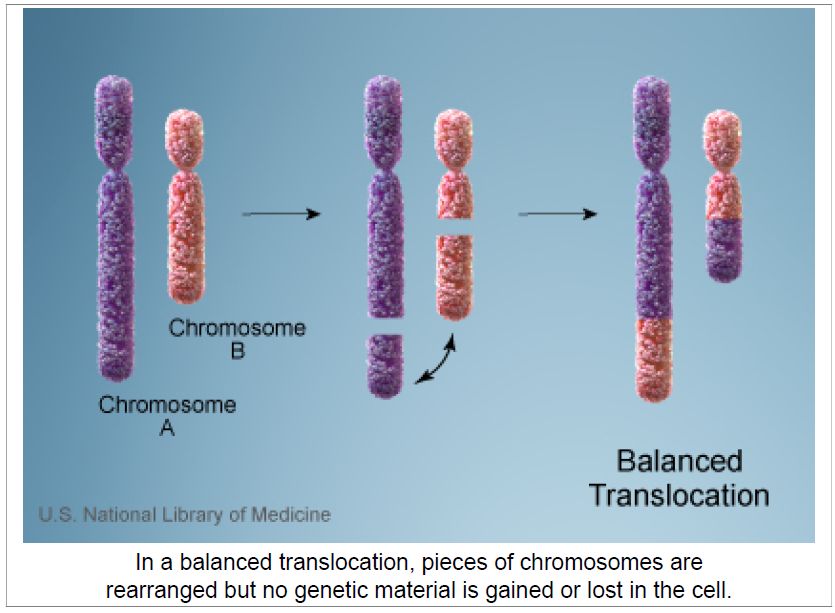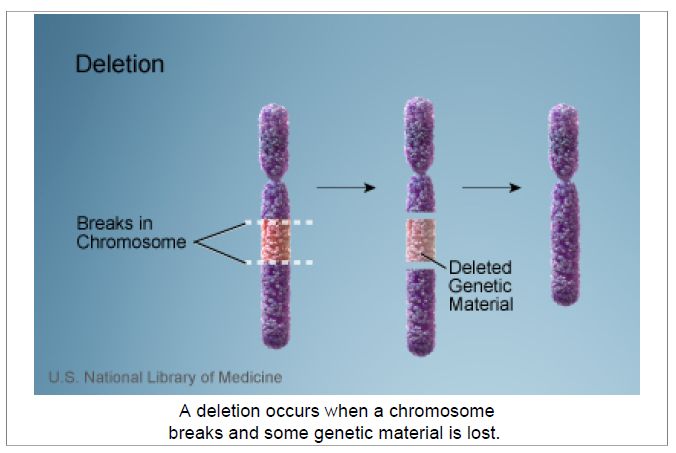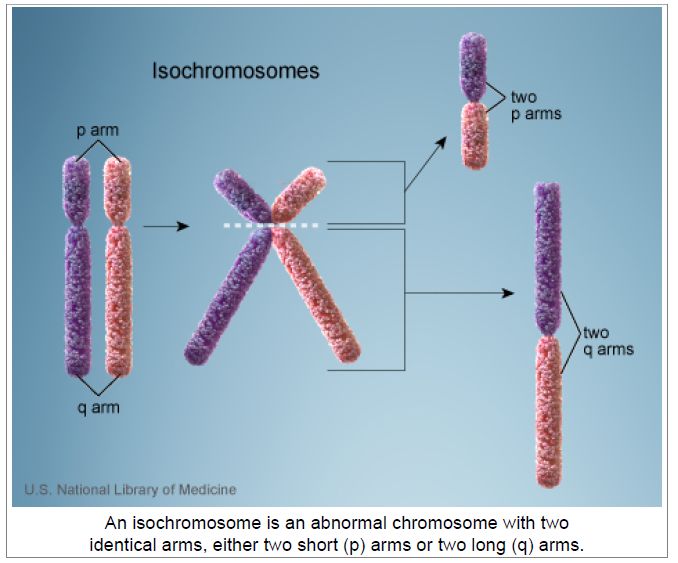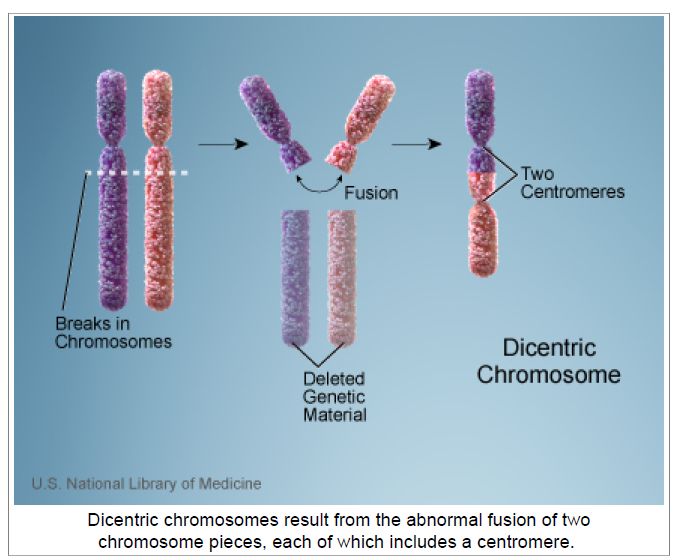


 النبات
النبات
 الحيوان
الحيوان
 الأحياء المجهرية
الأحياء المجهرية
 علم الأمراض
علم الأمراض
 التقانة الإحيائية
التقانة الإحيائية
 التقنية الحيوية المكروبية
التقنية الحيوية المكروبية
 التقنية الحياتية النانوية
التقنية الحياتية النانوية
 علم الأجنة
علم الأجنة
 الأحياء الجزيئي
الأحياء الجزيئي
 علم وظائف الأعضاء
علم وظائف الأعضاء
 الغدد
الغدد
 المضادات الحيوية
المضادات الحيوية| Can changes in the structure of chromosomes affect health and development |
|
|
|
أقرأ أيضاً
التاريخ: 24-3-2021
التاريخ: 6-12-2015
التاريخ: 30-4-2021
التاريخ: 2025-02-19
|
Can changes in the structure of chromosomes affect health and development?
Changes that affect the structure of chromosomes can cause problems with growth, development, and function of the body's systems. These changes can affect many genes along the chromosome and disrupt the proteins made from those genes.
Structural changes can occur during the formation of egg or sperm cells, in early fetal development, or in any cell after birth. Pieces of DNA can be rearranged within one chromosome or transferred between two or more chromosomes. The effects of structural changes depend on their size and location, and whether any genetic material is gained or lost. Some changes cause medical problems, while others may have no effect on a person's health. Changes in chromosome structure include:
Translocations
A translocation occurs when a piece of one chromosome breaks off and attaches to another chromosome. This type of rearrangement is described as balanced if no genetic material is gained or lost in the cell. If there is a gain or loss of genetic material, the translocation is described as unbalanced .
Deletions
Deletions occur when a chromosome breaks and some genetic material is lost. Deletions can be large or small, and can occur anywhere along a chromosome.
Duplications
Duplications occur when part of a chromosome is copied (duplicated) too many times. This type of chromosomal change results in extra copies of genetic material from the duplicated segment.
Inversions
An inversion involves the breakage of a chromosome in two places; the resulting piece of DNA is reversed and re-inserted into the chromosome. Genetic material may or may not be lost as a result of the chromosome breaks. An inversion that involves the chromosome's constriction point (centromere) is called a pericentric inversion. An inversion that occurs in the long (q) arm or short (p) arm and does not involve the centromere is called a paracentric inversion.
Isochromosomes
An isochromosome is a chromosome with two identical arms. Instead of one long (q) arm and one short (p) arm, an isochromosome has two long arms or two short arms. As a result, these abnormal chromosomes have an extra copy of some genes and are missing copies of other genes.
Dicentric chromosomes
Unlike normal chromosomes, which have a single constriction point (centromere), a dicentric chromosome contains two centromeres. Dicentric chromosomes result from the abnormal fusion of two chromosome pieces, each of which includes a centromere. These structures are unstable and often involve a loss of some genetic material.
Ring chromosomes
Ring chromosomes usually occur when a chromosome breaks in two places and the ends of the chromosome arms fuse together to form a circular structure. The ring may or may not include the chromosome's constriction point (centromere). In many cases, genetic material near the ends of the chromosome is lost.
Many cancer cells also have changes in their chromosome structure. These changes are not inherited; they occur in somatic cells (cells other than eggs or sperm) during the formation or progression of a cancerous tumor.











|
|
|
|
دخلت غرفة فنسيت ماذا تريد من داخلها.. خبير يفسر الحالة
|
|
|
|
|
|
|
ثورة طبية.. ابتكار أصغر جهاز لتنظيم ضربات القلب في العالم
|
|
|
|
|
|
|
العتبة العباسية المقدسة تدعو جامعة ديالى للمشاركة في حفل التخرج المركزي الخامس
|
|
|